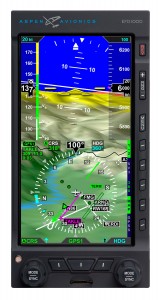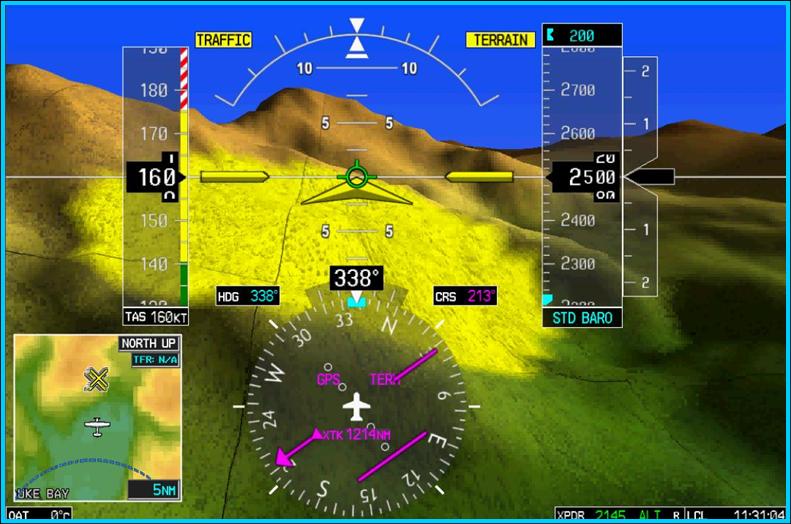Let’s say you’re flying in the mountains of Colorado on a cloudy day. There’s a solid layer from the surface all the way up to 14,000 feet. You’re inbound to Eagle (KEGE) on the RNAV (GPS) D approach. There are mountains next to you and below you, but you aren’t concerned since you can see them all. The base of the last reported overcast layer was 3,000 feet, so you know you’ll break out before the MDA and land no problem.
At 11,100 over AWACC, you clearly see the top of the mountain below you. You are comfortably above it. You already have the runway in sight as well. You pop out of the clouds on the approach at 9,700 feet, spot the airport and follow the tower’s instructions to circle north of the runway for a left base for runway 7.
How could you see the mountains inside the clouds? You have Synthetic Vision installed on your glass panel, that’s how.
Synthetic Vision, which has actually been around since the ’70s when NASA and the US Military first developed it, was first FAA certified for the Gulfstream PlaneView flight deck in 2009. Garmin, Avidyne, and Aspen are the main general aviation manufacturers of synthetic vision these days. All Garmin PFDs are now equipped with Synthetic Vision while Aspen gives you the option to upgrade to Synthetic Vision when you get one of their PFDs installed. Avidyne gives you Synthetic Vision in their R9 upgrade for the Cirrus.
What is Synthetic Vision? Basically, it’s a 3-D picture on the primary flight display showing terrain, obstacles, traffic, and runways. It greatly enhances situation awareness in areas of terrain or high obstacles during IFR conditions or at night.
The goal behind the development of Synthetic Vision was to decrease the amount of controlled flight into terrain (CFIT) accidents. A CFIT accident consists of a perfectly airworthy airplane flown by a pilot (or autopilot) unintentionally into terrain. These accidents can happen in low visibility conditions or at night, but the reason is mainly due to the pilot losing track of his position in relation to obstacles or terrain (or water as was the case with JFK Jr.).
With Synthetic Vision, the goal is to enhance pilot knowledge of what is around the airplane at all times. When you’re at altitude, the terrain below you looks flat. When you start descending down amongst the rocks, the hills or mountains start to rise up on your screen. For those used to the coloration with the 2-D terrain feature on a GPS unit, it translates very easily to the terrain coloration on a Synthetic Vision equipped PFD. Terrain that is between 100 and 500 feet below the aircraft is shown as yellow, while terrain closer than 100 feet is depicted as red.
One neat feature on Garmin units is the Highway in the Sky. When a pilot puts a course or a flight plan in the GPS, the PFD displays magenta boxes at the altitude selected displaying the route. It’s handy when hand flying to just “fly through the boxes.” They also display descent angles on approaches.
Synthetic Vision is still optional on Garmin and Aspen units, but I highly recommend springing for it. It will give you a higher level of safety and keep you out of the rocks.


